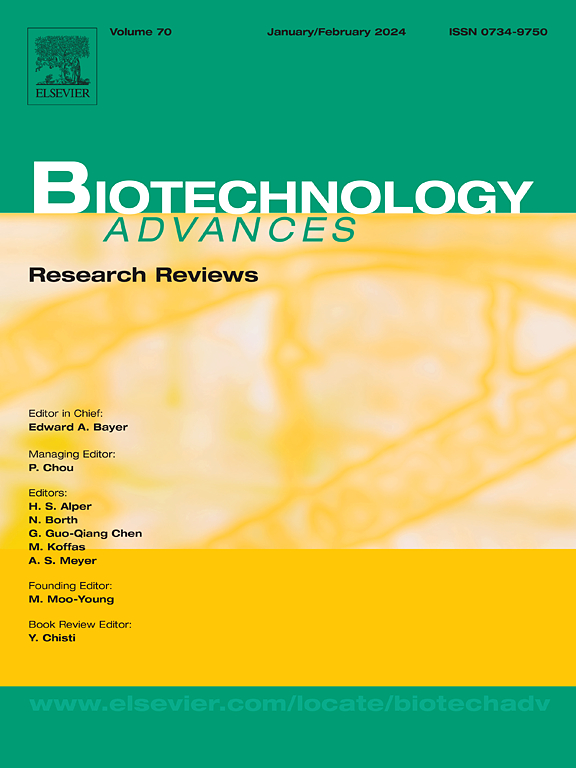Mechanistic modeling of lipid nanoparticle formation for the delivery of nucleic acid therapeutics
IF 12.5
1区 工程技术
Q1 BIOTECHNOLOGY & APPLIED MICROBIOLOGY
引用次数: 0
Abstract
Nucleic acids such as mRNA have emerged as a promising therapeutic modality with the capability of addressing a wide range of diseases. Lipid nanoparticles (LNPs) as a delivery platform for nucleic acids were used in the COVID-19 vaccines and have received much attention. While modern manufacturing processes which involve rapidly mixing an organic stream containing the lipids with an aqueous stream containing the nucleic acids are conceptually straightforward, detailed understanding of LNP formation and structure is still limited and scale-up can be challenging. Mathematical and computational methods are a promising avenue for deepening scientific understanding of the LNP formation process and facilitating improved process development and control. This article describes strategies for the mechanistic modeling of LNP formation, starting with strategies to estimate and predict important physicochemical properties of the various species such as diffusivities and solubilities. Subsequently, a framework is outlined for constructing mechanistic models of reactor- and particle-scale processes. Insights gained from the various models are mapped back to product quality attributes and process insights. Lastly, the use of the models to guide development of advanced process control and optimization strategies is discussed.
脂质纳米颗粒形成的机制建模用于核酸疗法的递送。
核酸(如mRNA)已成为一种有希望的治疗方式,具有解决各种疾病的能力。脂质纳米颗粒(LNPs)作为核酸的递送平台在新冠肺炎疫苗中得到了广泛关注。虽然现代制造工艺涉及将含有脂质的有机流体与含有核酸的水流体快速混合,但对LNP形成和结构的详细了解仍然有限,而且扩大规模可能具有挑战性。数学和计算方法是深化LNP形成过程的科学理解和促进改进过程开发和控制的有前途的途径。本文介绍了LNP地层的机理建模策略,从估计和预测各种物质的重要物理化学性质(如扩散率和溶解度)的策略开始。随后,概述了构建反应器和颗粒尺度过程的机制模型的框架。从各种模型中获得的洞察力被映射回产品质量属性和过程洞察力。最后,讨论了利用这些模型指导先进过程控制和优化策略的开发。
本文章由计算机程序翻译,如有差异,请以英文原文为准。
求助全文
约1分钟内获得全文
求助全文
来源期刊

Biotechnology advances
工程技术-生物工程与应用微生物
CiteScore
25.50
自引率
2.50%
发文量
167
审稿时长
37 days
期刊介绍:
Biotechnology Advances is a comprehensive review journal that covers all aspects of the multidisciplinary field of biotechnology. The journal focuses on biotechnology principles and their applications in various industries, agriculture, medicine, environmental concerns, and regulatory issues. It publishes authoritative articles that highlight current developments and future trends in the field of biotechnology. The journal invites submissions of manuscripts that are relevant and appropriate. It targets a wide audience, including scientists, engineers, students, instructors, researchers, practitioners, managers, governments, and other stakeholders in the field. Additionally, special issues are published based on selected presentations from recent relevant conferences in collaboration with the organizations hosting those conferences.
 求助内容:
求助内容: 应助结果提醒方式:
应助结果提醒方式:


